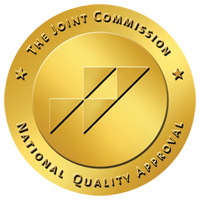The factors influencing substance abuse are dynamic, and understanding them can improve outcomes for those living with substance use disorder.
Substance abuse impacts millions of people in the United States each year. In 2022, 48.7 million people 12 and older were reported to live with substance use disorder (SUD). Whether you’re experiencing SUD or know or love someone who is, it’s important to understand the factors influencing substance abuse.
1. Biological Factors
Your genetic makeup determines more than just your physical appearance — it can make you more susceptible to addiction, too. People with a family history of addiction may be more likely to experience substance use disorders. Genetic factors can influence how one’s body processes and responds to chemicals, making recreational drug use challenging to manage.
Substance abuse is known to alter brain chemistry, triggering the brain’s reward center to want more. If your genetic makeup is already craving additional dopamine, drugs fill a gap that may be an underlying, inherited condition. When your healthcare provider asks if substance abuse runs in your family, answer honestly to ensure a comprehensive evaluation.
2. Mental Health Conditions
Many individuals live with co-occurring disorders that often blur the lines between genetic predisposition and mental health conditions. Some people use drugs and alcohol to self-medicate, numbing intrusive thoughts or feelings caused by anxiety, depression, and trauma. In attempts to dull the pain associated with mental health conditions, individuals can become dependent on drugs and alcohol.
Those diagnosed with a depressive disorder may be less likely to speak up and ask for help, so be observant. Often, there is a lack of understanding of mental health conditions and treatment options. Social stigma can play a role, even as public discourse surrounding mental health has improved.
3. Environmental Factors
A positive environment understandably helps facilitate a positive outlook, while a negative one can create lifelong problems, including drug addiction. When one lives in a toxic environment, where yelling is the norm and only faults are recognized, drugs are friends. If drugs are already present at home, there may be less concern with drug use, or it may go completely unnoticed.
Siblings can influence one another to experiment with drugs, leading to adolescent substance abuse. Peer pressure from family and friends can make it hard to say no, especially when all you want is acceptance. If your home life is toxic, you’ll do almost anything to fit in, even if you know it’s wrong.
4. Social and Cultural Factors
One’s friend circle can reinforce social and cultural factors experienced in media, where drug and alcohol is glorified. When your favorite action hero or beauty queen is seen using substances, it’s easy to model your behavior accordingly. Some sober-curious circles exist, but alcohol is intertwined with culture in a way that’s difficult to sever.
Alcohol is a known social substance and is often a common factor when getting together with friends and celebrating. An automatic plus-one to a party, alcohol can easily get out of control and normalize excessive drinking and alcohol dependence. Pointing out excessive use can feel like a risk to one’s social standing, making it easy to ignore.
Individuals in low-income situations may center gatherings around drugs and alcohol, which can cost less than other recreation. Gathering around a fire pit and drinking can be fun, but if it’s the only social option, it can spiral. Some communities are especially resistant to acknowledging mental health conditions, making substance abuse more prevalent and tolerated.
5. Access to Healthcare and Treatment
One’s geographic location to healthcare can greatly impact their overall health, as proximity is often a barrier to seeking care. When it comes to addiction, treatment may be available, but under a list of options from a provider. Fewer specialized providers and facilities are available, making seeking care a daunting task for many.
Individuals without healthcare coverage or with poor coverage may be less likely to seek help due to the potential cost. This can lead individuals to self-medicate mental health issues with drugs and alcohol, resulting in more problems. Without access to care, people can’t receive early intervention for addiction, which otherwise could improve recovery outcomes.
The Affordable Care Act has helped expand access to mental health care and addiction services, but many barriers remain. General awareness of qualified providers, geographic location, and social acceptance of receiving care make identifying and treating issues challenging.
The Cycle of Addiction Can End With You
Substance abuse is a dynamic issue that’s influenced by factors inside and outside of the body. By understanding the underlying causes and external factors that influence substance abuse, you can identify potential risks.
Strive to reduce the stigma surrounding discussions about substance abuse and treatment in your home, social circle, and community. When you do, you can help improve outcomes for those who are more at risk for developing addictions. Together, we can help others break the cycle of addiction and create healthier, happier lives.


